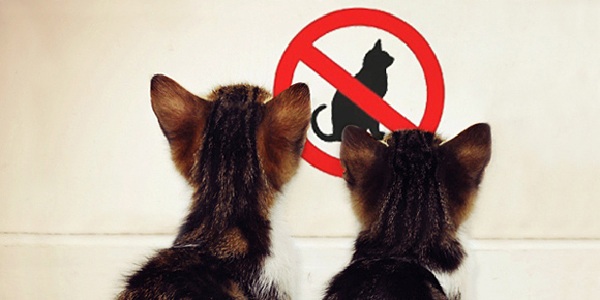Facebook has been a promising venue through which to market a dealership ever since it reached a high level of popularity back in 2008. Back then, it was just breaking the hundred million user level and was showing signs that it would be able to be business-friendly in contrast to its rival MySpace. Now, it’s 10 times bigger and commands more time of humans than any other website.
The problem is that it’s not the easiest marketing platform to master. Unlike Google, Twitter, and other players that are used on a daily basis, Facebook has algorithms that keep dealers from finding success. Google has an algorithm, of course, but because people go to it to find businesses, they make it very easy for those willing to pay money or play by the optimization rules to get the exposure they need. On Facebook, users aren’t going there to engage with businesses so trying to “sneak in” marketing and advertising is an act that goes contrary to the desires of the users. This is why the algorithm can be so harsh.
It’s difficult, but it’s not impossible. There is plenty of advice on the internet that tells businesses and marketers how to have success on Facebook. Unfortunately, some of it is poor advice. Others are simply antiquated. Most make general assumptions. There aren’t very many specifics that small businesses can use to make an impact.
The best way for a local business to move the needle is to get to a point of local exposure and built up trust that allows them to give their marketing messages exposure and that promotes communication with customers and potential customers through the network itself. Accomplishing this takes a process.
The first three steps in the process are the easiest, the ones that can all be described in a single blog post. The stages beyond the first three get much more complex, not because they’re so much harder but because they become very specific to the goals of the dealership as well as the personality of the team. We can’t go into those, but the first three should be enough to get you going:
1. Grow locally
Here’s the bad news. If you have accumulated a ton of fans outside of your market area, there’s a good chance that you’ll have to dump everyone and start over. It’s not fun. It’s not easy (unless your following is so extended that you have to delete the page altogether and start from scratch – that’s easy). It can be one of the most gut-wrenching decisions you’ll ever make pertaining to your social media marketing, particularly if you’ve been doing it for years. All that effort, wasted. It hurts.
The good news is that building back up from scratch isn’t as hard as most think. It requires money – Facebook advertising is the best way to get a local following built up – but not much. Many businesses are already through this stage and can boast having a mostly-localized following. Regardless of how you get there, this is the first step – get your following up to acceptable level.
2. Get engagement
This is always the scariest piece of advice and the most challenging stage to implement. First, the term “engagement” is so overused and misunderstood. To so many, it means cats. The internet is loaded with cats. People post pictures of cats all the time. It seems like a great place to start.
On a local business page, there should be no cats allowed unless you’re building a page for a veterinarian.
Every business has some sort of relevant content that can be posted. No business is so boring that they can’t find interesting things to post that pertain to what they do. This is paramount – car dealers should be posting cars, automotive tips, and localized events because that’s what the people who liked their page expect. There’s no need to get too clever. Strong content doesn’t have to be contrived. It doesn’t have to be shared from George Takei’s awesome Facebook page.
Keep it organic. Keep it real. Keep it relevant. Your fans will like it and become engaged (whatever that really means).
3. Earn the right to market
There was a question asked on a forum about how to judge success on a Facebook page. They had built up to a nice number of fans. Their fans were mostly localized. They had engaging content on the page (though there were some cat-like posts that we don’t recommend, but otherwise it wasn’t bad). Now, they wanted to see where the ROI was.
Unfortunately, there was none, at least not that was noticeable. They had made it through to stage three but hadn’t taken it to the next level.
Facebook users aren’t as silly as we often believe. They don’t like a local business page without the understanding that they’ll likely see some marketing materials cross their feed from time to time. If they don’t want the marketing content, they wouldn’t like a business in the first place.
Some take this to the extreme and post only marketing stuff. This is a huge mistake based upon what was mentioned above – the algorithm. Marketing content does not perform very well under most circumstances, so having only marketing content won’t work. You’ll lose fans. You’ll move down in the news feed based upon poor EdgeRank. You’ll be broadcasting messages that nobody will ever see.
In stage three, local businesses have to earn the right to post marketing content by doing a couple of things. First, they have to be very proficient at step 2 and have an audience that is engaged. Then, they have to craft their marketing content in a way that can get the message out there while doing minimal damage to EdgeRank or following. There is no way to post marketing content that won’t turn some people off. You simply want to minimize the damage. Done right, there are more positive effects to EdgeRank from the right marketing material than any of the negatives that are bound to happen.
It must be timed appropriately. That timing is based upon the activities on the page on a regular basis, but the right mix of conversational and converting content should be worked in. Too much and you lose too many fans. Too little and there’s no ROI. Finding the right mix is the key and it’s something that must be diagnosed on an individual basis rather than prompted in a blog post.
* * *
These are just the first three stages. There are more, but again they are really dependent on more factors than that can be described in a post. Whatever you do, don’t jump ahead. Engaging content is worthless if you have 20 fans. Marketing content is worthless if you have the fans but they’re not engaged. If you start here, you can get to the next level which is true return on investment. You have to start somewhere.





Comments